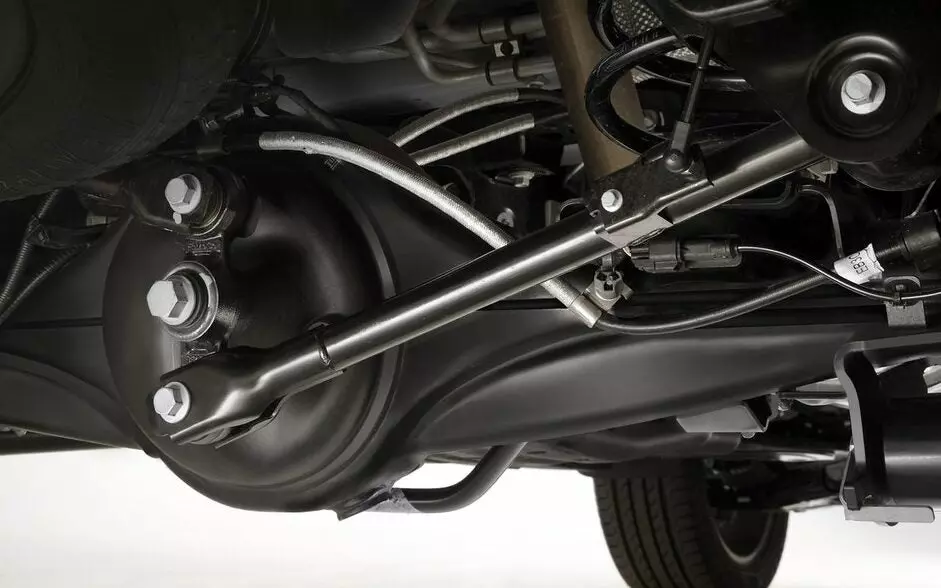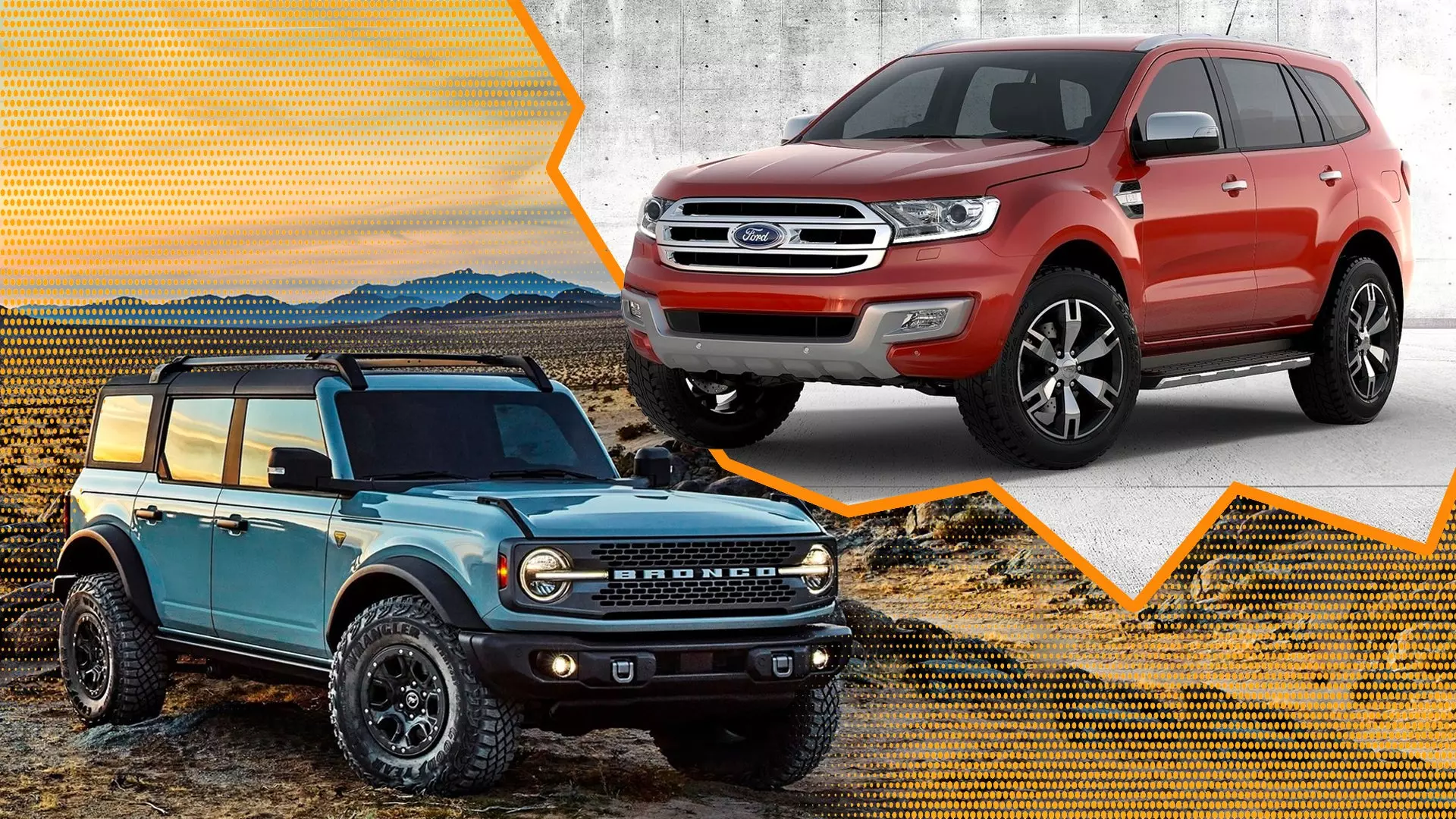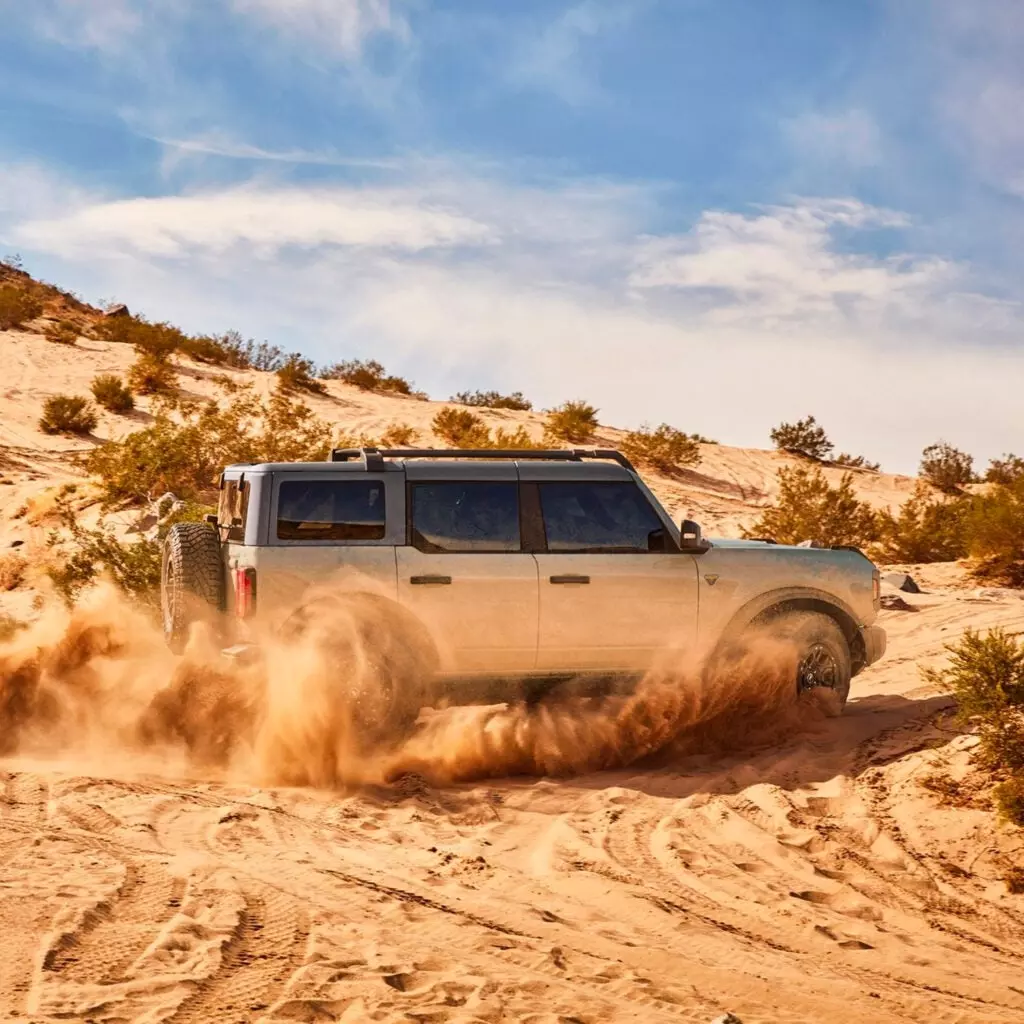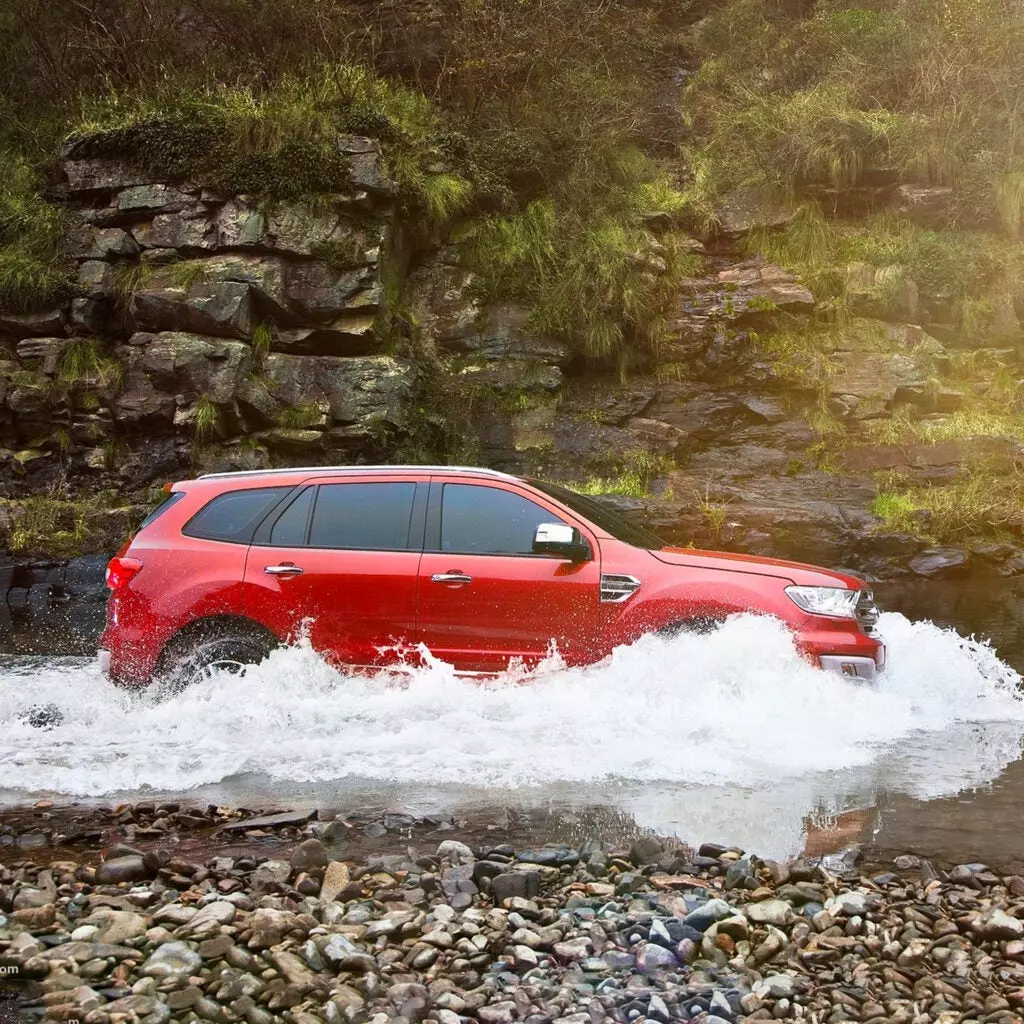The new 2021 Ford Bronco has been released to test drivers and early reviews are favorable. It’s a true rugged SUV with Jeep Wrangler-challenging capability and some proper off-road running gear under its skin. The Bronco is based on the Ford T6 platform, which is also the spine of the global Ford Ranger and Everest SUV sold overseas. In the early days of “new Bronco” rumors, many speculated that the Bronco would be a rebadged version of the Australian-market Everest. Obviously, the trucks don’t look the same at all, but there are some similarities and clear connections under the sheet metal.
If you haven’t already, check out our Bronco Review Rundown to get a comprehensive understanding of what the media thinks of this truck so far. If you’re already up to speed on the Bronco, let’s learn a little more about the Ford T6 platform it rides on and see how related the Everest, Bronco, (and Ranger) really are.
Running Gear
The new Bronco uses absolutely beeftastic front and rear Dana axles — an independent M190 or M210 Advantek Dana front axle and the famously tough Dana 44 live axle out back. It’s a mighty serious setup for off-roaders, with optional locking differentials front and back for top trim models with the M210 front diff. The 190 or 210 number is the measurement of the ring gear in millimeters, a de facto way of estimating diff strength.
The Everest is decidedly leaner in terms of equipment. It uses a much smaller rear differential than the Bronco, but uses a similar front differential. I’m not entirely sure what rear differential the Everest uses, the part number wasn’t readily available anywhere, but it’s certainly one I haven’t seen on another T6 truck. The front differential is the smaller M190 of lesser Broncos, while the rear differential is an unknown but has an optional locker for higher trim Everests.

Most similar to the Bronco is the US-spec ranger, sharing the M190 front differential and the Dana 44 rear differential. It also shares engines and gearboxes with the Bronco.
As for power plants, the Everest and Bronco have completely different engines.
Rear Suspension
The clearest differences across Ford T6 trucks are in the rear suspension. They all use their own arrangement of arms and mounting styles, with few similarities between them all.
The Bronco uses a five-link rear axle with a panhard bar for maximum off-road capability with a coil spring-over-damper setup and fully steel construction with no rear sway bar for maximum flex. It’s a simple, tried and true setup that makes the Bronco very capable and rugged over all kinds of terrain.
The Everest uses a reasonably different setup. It uses a Watt’s link four-link setup with separate coil springs and dampers; a big point of pride for the Everest when it was updated for 2015. A Watt’s link works as a good intermediary for on-road performance with some off-road flexibility, though it’s more road-focused than most live axle setups. It’s pretty far away from the Bronco in terms of engineering and design.
The Ranger uses a typical truck setup: A classic leaf spring setup with no frills. It’s as simple as they come, and also very different from the Bronco.
Front Suspension
This is where the trio of T6 trucks are most similar, even if they still have slight differences. They all use a dual wishbone front suspension with high-mounted upper control arms. Even if there are material differences across the three, I suspect all of their parts would bolt on to each other.
The Bronco is the fanciest of the lot with aluminum upper and lower control arms, not seen on any other T6 truck. It uses the same cast steel uprights of the Everest and Ranger, which is interesting considering the U.S. Ranger just got aluminum front uprights. Mounting points look the same across the three trucks, but the Bronco seems to have a slight change in the upper control arm geometry for more anti-dive, though there’s a decent chance that it’s just the photos giving that impression. An important distinction is that Bronco gets an active front sway bar that can fully disconnect out front, with an interesting hydraulic unit in the middle of the bar. Otherwise, the Bronco looks like an aluminum version of what Everest and Ranger are working with.
Everest and Ranger look completely the same: stamped steel upper and lower control arms and cast steel uprights, with newer rangers getting aluminum uprights. Nothing special, and basically the same as Bronco.
Conclusions
I’d say that the Bronco is certainly a T6 platform-mate of the Everest, but it’s legitimately different enough to consider it a unique engineering proposition. The new Bronco uses a lot of small tricks to make it an extremely capable off-roader compared to the Everest and even the Ranger, and it’s much shorter than the Everest. The real giveaway of any family relationship is in the front suspension, where the Bronco is absolutely a close cousin of the Everest.
Since T6 is a true body-on-frame platform, there’s a certain amount of modularity to it by nature. Front suspension pick-up points are generally pretty concrete and unchangeable thanks to a lot of packaging considerations like the front driveshafts, steering rack, roll centers, suspension geometries, and the placement of the engine; this is why we see the obvious relationship between the vehicles in the front suspension.
Out back, there’s a lot more room to play with, with less crucial packaging and more flexibility being afforded to the engineers. Pickup points can be changed easily with moving tabs around on the frame, and this also reflects in the Bronco/Everest/Ranger trinity. This sort of rear modularity is built deliberately into truck platforms to allow for different setups capable of various duty cycles, especially with varying weight distributions and payload weights.
With all of that said, the Bronco is mostly its own engineering endeavor. The body engineering, the rear of the frame, and all the bits and bobs that make the Bronco an off-road monster are uniquely Bronco, especially that five-link rear suspension. It will still never shake off that last percentage it shares with the Everest in the front suspension and general front packaging, with the M190 differential, control arms, and hardpoints. Bonus point for anyone who realized that it’s also shared with the overseas Mazda BT-50 pickup truck.
It is said that the most expensive part of engineering a car is the area in between the steering rack and the steering wheel. That’s where most packaging and engineering considerations go. The new Bronco is a great example of that. So yes, the Bronco is kind of like a Ford Everest, but not in any way that should detract from it or make it less impressive off-road.











